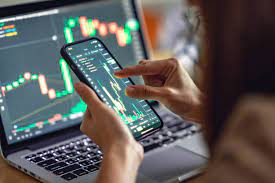The forex market is a fast-paced and exciting market where traders can earn huge profits with little investment. However, to make profits, traders need to understand how leverage works in the forex market. This article will explain leverage and how it works in the forex market. It will also highlight the benefits and risks of using leverage and provide tips on how to manage risk when trading forex using leverage.
Leverage is a tool that enables traders to trade much larger positions than their actual trading capital. It is a technique that amplifies the potential profit or loss of a trade. In the forex market, the use of leverage is common because the foreign exchange market is highly liquid and volatile. Forex brokers offer leverage ratios that can go as high as 1:1000. For example, if you have $1000 in your trading account and you use a leverage of 1:500, you can place trade contracts worth up to $500,000.
The benefits of using leverage in forex trading are obvious. The most significant benefit is the ability to control larger positions with less capital. This means that traders with limited capital can trade in the forex market and potentially earn huge profits. Leverage is also a useful tool for experienced traders who can leverage their expertise to earn even more substantial profits from their trades.
However, there are risks associated with using leverage, which every trader should be aware of. One significant risk is the potential loss of your entire trading account if the market moves against you. High leverage ratios increase the risk of margin calls, which are urgent requests from your broker to deposit more funds into your account if your trades are losing money. Therefore, traders must learn to manage their risk when using leverage to avoid losses that could wipe out their trading capital.
One way to manage risk when using leverage is to limit the amount of leverage used per trade. For example, if your broker offers leverage of up to 1:1000, you can opt to use a lower leverage ratio of 1:100 or 1:50. This will help reduce the potential risk and protect your trading capital. Another way to manage risk is to use stop-loss orders, which will limit the potential loss on a trade if the market moves against you.
Traders should also educate themselves on basic forex markets concepts such as money management, risk management, and trading psychology. These concepts are essential to every trader regardless of the trading style or markets traded. By educating yourself on trading concepts, you will be better equipped to manage your risks when trading forex using leverage.
Conclusion:
Leverage is an excellent tool for traders who want to earn huge profits with limited capital. However, traders must understand the risks associated with using leverage and learn to manage their risks effectively. By limiting leverage use per trade, using stop-loss orders, and educating themselves on basic trading concepts, traders can maximize their profit potential and protect their trading capital. Ultimately, successful forex trading requires patience, discipline, and a clear understanding of leverage, risk, and money management principles.
Blog & Magazine
